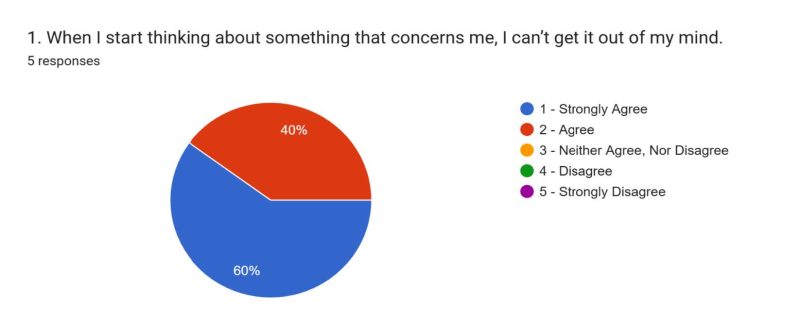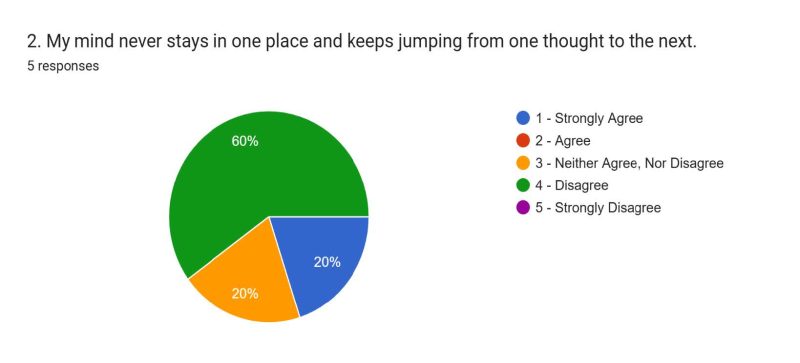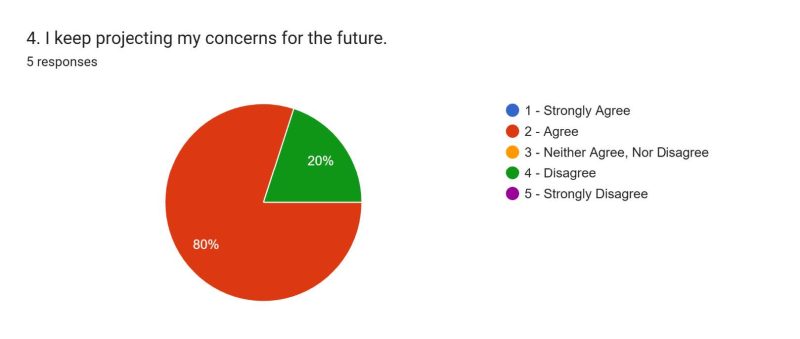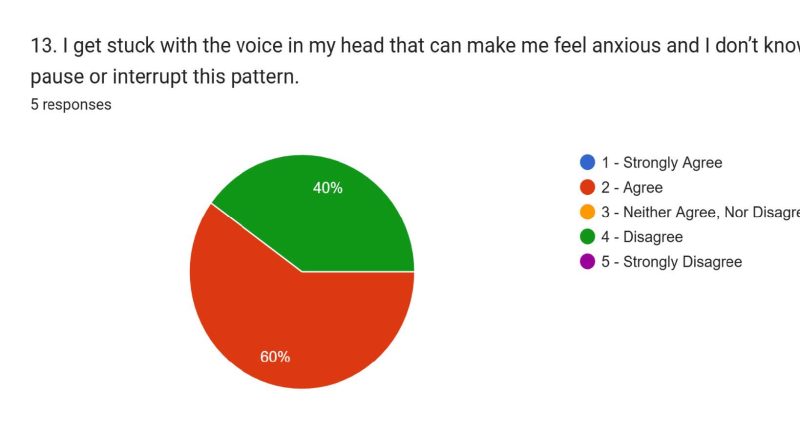“Workplace Mindfulness”
Workshop Series: Fall 2024
Evaluation Report …
December 6, 2024
- Met weekly in 1 ¼ hr. sessions on Zoom (September 25th to November 20th)
- 6 sessions initially, extended to 9 sessions
- Weekly topics:
- 1. Evidence of Mindfulness in the Workplace—Core Practice
- 2. Attention in the Age of Digital Distraction
- 3. Seeing the Big Picture, Beyond the Details
- 4. Navigating Stress, Uncertainty and Resilience
- 5. The Power of Pausing
- 6. Building Respectful Relationships
- 7. Responding Instead of Reacting
- 8. Joining Vision and Practicality
- 9. Mindfulness for Innovation and Problem Solving
The weekly sessions include: check-in, mindfulness practice instruction and guidance, debriefing, presentation on a topic, Q&A / discussion.
Readings from Mindfulness in the Workplace by Andrew Safer were assigned, and links to articles and videos on the next week’s topic were circulated between sessions.
The starting group consisted of 9 individuals (6 males, 3 females); the completing group: 6 individuals (5 males; 1 female)
6 participants in the starting group were living in St. John’s and surrounding areas; 3 were living in Toronto.
Only the 5 individuals who completed both pre- and post-evaluations were included in the data that Google Forms used to calculate the percentages represented in the pie charts below. This includes one participant who completed 6 sessions. (He was unable to continue with the extension to 9 sessions due to family obligations.)
Their employment included: computer technologist (government); project manager, mining / engineering; senior structural engineer; janitorial; packaging machine operator; and unemployed.
Participants were asked to indicate whether they agree or disagree with 18 statements both at the beginning and end of the program and, at the end, were asked to write out responses to 7 questions.
Mindfulness Training includes developing attention, a present-moment orientation, and non-judgment / acceptance. Over time (in this case, over nine weeks), these developing capacities begin to emerge in the conduct of one’s life—in the workplace as well as in non-work contexts.
The evaluation outcomes shown below evidenced significant improvements in the following areas:
- Ability to deal with difficult thoughts, and the tendency to ruminate
- Focus
- Being present
- Self-Efficacy
- Ability to deal with stress
- Acceptance of things as they are
- Dealing with troubling emotions
- Feeling grounded
- Ability to control thoughts, moods, and feelings
- Ability to deal with the voice in one’s head that feeds anxiety
- Ability to deal with the voice in one’s head that feeds stress
- Resilience
The strong outcomes in this evaluation report can be attributed to the participants’ commitment and engagement, and their dedication to ongoing mindfulness practice.
Note: If this were a research study, the sample size would be extremely small. Instead, these are outcomes from a publicly offered community-based training, which typically involves small groups.
If you have any questions or comments about “Workplace Mindfulness”, please include them here and they will be answered promptly.:
“Workplace Mindfulness”: Interest – Google Forms
In the data visualizations below, the pre-evaluation responses for each statement (1 – 18) appear first, with the post-evaluation responses to that statement directly below.
Because the statements are negatively worded, “agree” and “strongly agree” are negative indications, whereas “disagree” and “strongly disagree” are positive. Improvement is shown when the post-evaluation pie chart shows greater disagreement (green and purple) / less agreement (red and blue) than the pre-evaluation chart.
Pre-Evaluation

Post-Evaluation

Pre-Evaluation

Post-Evaluation

Pre-Evaluation

Post-Evaluation

Pre-Evaluation

Post-Evaluation

Pre-Evaluation

Post-Evaluation

Pre-Evaluation

Post-Evaluation

Please note this discrepancy: In #6, the wording in the pre-evaluation question is “my work life”. In the post-evaluation question, it’s “my life”.
Pre-Evaluation

Post-Evaluation

Pre-Evaluation

Post-Evaluation

Pre-Evaluation

Post-Evaluation

Pre-Evaluation

Post-Evaluation

Pre-Evaluation

Post-Evaluation

Pre-Evaluation

Post-Evaluation

Pre-Evaluation

Post-Evaluation

Pre-Evaluation

Post-Evaluation

Pre-Evaluation

Post-Evaluation

Pre-Evaluation

Post-Evaluation

Pre-Evaluation

Post-Evaluation

Pre-Evaluation

Post-Evaluation

Qualitative Questions
1. What are some of the main points about “mindfulness” that resonate for you and your everyday life?
Thoughts
Realizing that I do not have to get carried away with every thought that comes to mind and that I can recognize it as “just a thought”.
I am working on the agency of thoughts. Do they provide a useful service. I am building on my ability to let thoughts go past without attaching to them. It is difficult but I am having noticeable results.
Being Present
Staying present in the moment at work and practicing detachment from technology at home have been monumental to improving my overall mood throughout the day.
Bringing my thoughts to the present. Being able to come back to real world issues to look at.
Numerous Everyday Benefits
I feel mindfulness has allowed me to gain perspective on everyday situations. I have improved memory, concentration, and overall mental clarity. I am more able to respond to life’s inevitable difficulties with openness and kindness. I feel less controlled by outside forces. Mindfulness has been fantastic for me!
2. Which mindfulness-in-everyday-life practices are you finding helpful, and in what way?
Everyday Tasks
Being mindful sometimes of minor tasks, such as brushing teeth, making coffee, and trying not to “day dream” as I go about those tasks. I find that restful for the mind.
I enjoy being mindful while showering, doing the dishes, walking, and sometimes driving. I still struggle with this practice, but I value its importance and try to do it whenever I can.
Pausing (Head and Shoulders)
I use head and shoulders (pausing practice) when I am overwhelmed with things looking for my attention. Sometimes these can be overwhelming in the moment. I also find a calmness in the outbreath when I allow myself to go out with the breath.
I am learning to appreciate head and shoulders, very effective and fast.
Sitting Meditation
Sitting meditation at the beginning of each day, it helps me focus and begin the day positively.
I am able to use sitting, walking and head and shoulders practice throughout the day, with dedicated 35 minutes of practice in the evening. I have included love and kindness and fixed-point gaze meditations more recently as well.
3. How helpful has this workshop series been for you?
On a scale of 1 to 10…8—(2), 9—(2), 10—(2). Average: 9.
4. Specifically, how has it helped you deal with workplace issues?
Living with Uncertainty
Recognizing “thoughts” for what they are. Accepting how to live with uncertainty.
Calm and Confident
I haven’t been employed for a few months, but I know it will serve me well when I find work. I think it will help me be a more calm and confident version of myself.
Focus
It has helped me to focus on what is important and not on the little things that are not.
Emotions, Better Relationships
As a Team Lead at work, being present with my emotions and present with my work has allowed me to make better on-the-job decisions as well as foster better relationships with my coworkers.
Clear Head
I am often busy at work, with no real team to share the workload. I have used mindfulness to clarify in my own mind what needs to be done and when. When there is too much to do and too little time, I am not relating that back to any weakness or lack of ability on my part. With a clear head I can define for my bosses what they can expect from my role.
Reflect
It has taught me to reflect before pursuing a challenge, be it an email or a response in a meeting.
5. How many times a week are you doing meditation practice at home?
5 -10 min. (2); 10 min. (1); 5 – 25 min. (1) 20 – 35 min. (1), 25 min. (1)
6. Do you think other people could benefit from learning about
mindfulness—both meditation and the other practices?
Yes (all 6)
7. How would you explain to a friend the impact “Workplace
Mindfulness” and mindfulness practice has had on you?
Dealing with Thoughts
The main impact has been how to deal with thoughts before they get out of hand and lead to a stressful reaction.
Managing Difficult Emotions
It has been a great way to build resilience and improve my mental health. I feel more able to manage difficult emotions and be a more centered individual.
Focus
It quiets my mind and helps me focus: calming.
Better Respond to Stressors
The practice has allowed me to create a larger space between thought and action, and as someone with ADHD, that has been very helpful. When I am stressed at work, I am able to better respond to stressors and take proper action.
Creativity and Clarity
The connection to how we think, feel and act is profound. Establishing a new relationship with thought opens up space for creativity and clarity.
Priorities and Patience
Helped me realize the present, issues which are important now, and taught me to be patient.
Note: The responses of one participant who only completed the post-evaluation are included above.
Upon learning and practicing fundamental mindfulness skills, these six individuals are applying them in their own way in the workplace, reporting marked improvement in stress management, handling difficult emotions, focus, presence, creativity, and clarity of mind.
If you are interested in joining the next “Workplace Mindfulness” training, or conducting a pilot within your organization, or if you have any questions about “Workplace Mindfulness”, please contact Andrew Safer at: andrew@safermindfulness.com
© Andrew Safer 2024